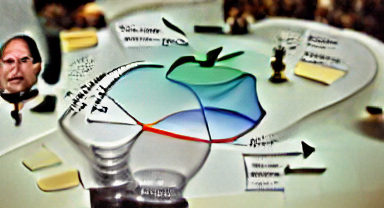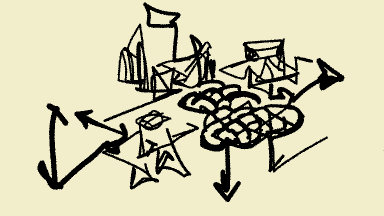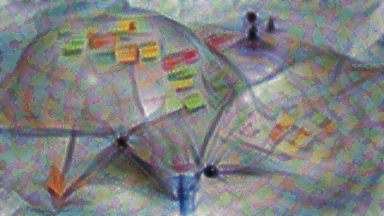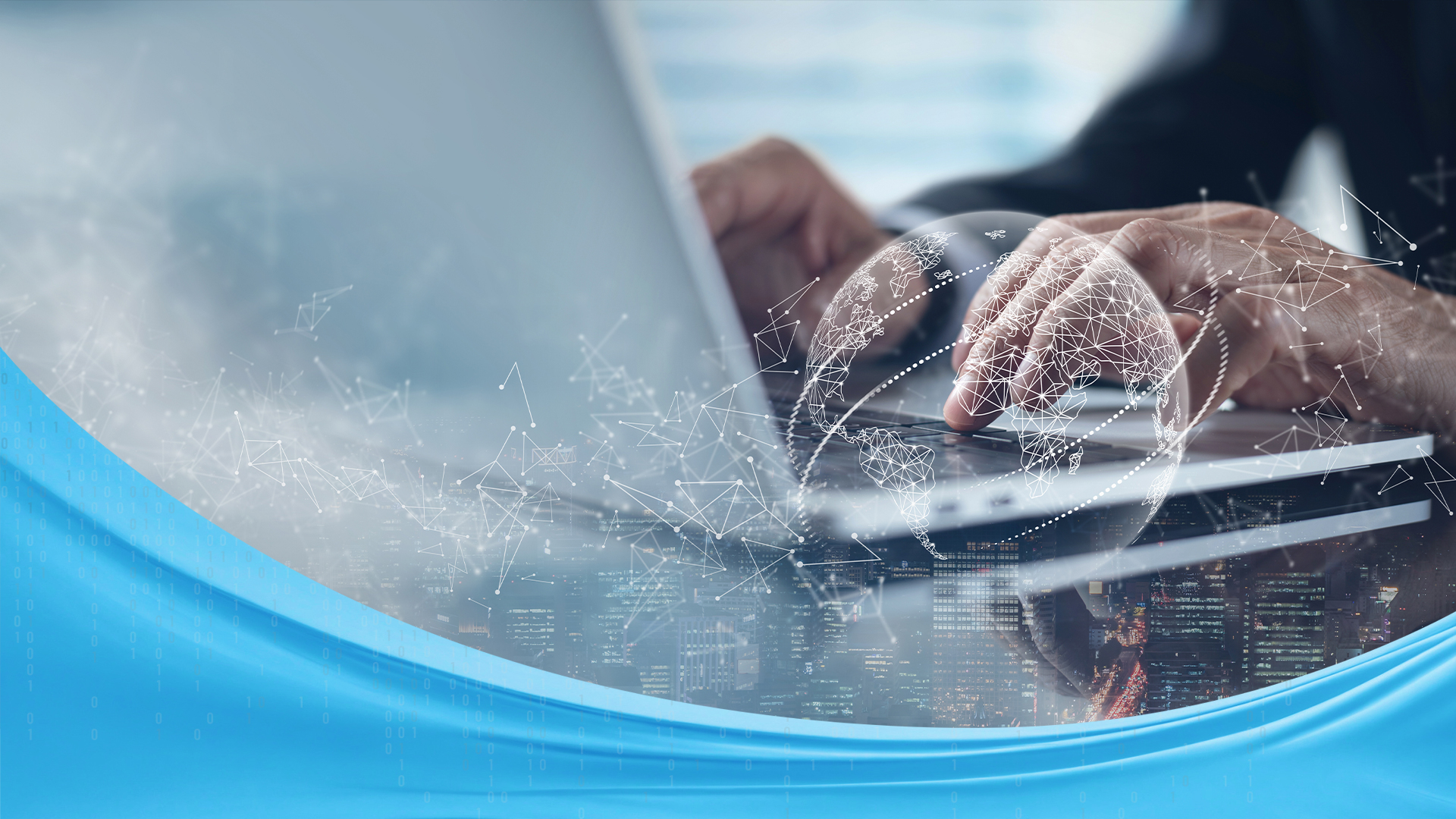
“Innovation distinguishes between a leader and a follower.” – Steve Jobs, Co-founder of Apple Inc.
Incorporating innovation criteria into the strategic decision-making framework can be a game-changer for organizations. Innovation is critical to the growth and sustainability of organizations in today’s rapidly changing business environment. Incorporating innovation criteria into the strategic decision-making framework can help organizations make more informed decisions that not only address current challenges but also enable them to be better prepared for the future. Your organization must prioritize innovation to stay ahead; it is no longer an option but a necessity to survive and thrive in the market. However, incorporating innovation into the strategic decision-making process can be challenging.
In this article, we will discuss how to incorporate innovation criteria into the strategic decision-making framework.
First, a definition to make sure we are all on the same page:
Innovation refers to the process of developing new ideas, products, or services that provide unique value to the organization, customers, or other stakeholders. It can also mean improving existing products or services to make them more effective, efficient, or user-friendly. At OZ, we believe that innovation is partly art and partly science. It’s important to incorporate free-range thinking techniques and approaches (like Design Thinking), but it’s also important to have an actual process that your organization follows for both coming up with the ideas and then implementing them.
Innovation is important because it helps organizations to stay competitive and relevant in the market. It allows them to create new products or services that meet the changing needs and preferences of the customers. It also helps them to differentiate themselves from the competition, increase their market share, and improve their profitability.

“Innovation is the specific instrument of entrepreneurship… the act that endows resources with a new capacity to create wealth.” – Peter Drucker, Management Consultant and Author
Moreover, innovation can also help organizations address societal challenges and create positive social and environmental impacts. For instance, companies can develop products or services that are more sustainable, reduce waste, or improve people’s health and well-being.
Innovation can take many forms, such as technological innovation, business model innovation, and process innovation. It can also be incremental, which refers to small improvements to existing products or services, or disruptive, which refers to significant changes that disrupt the existing market.
In many organizations, innovation usually occurs like this: ideas are generated, whether that is through an individual coming up with an idea that they would like to implement, or by having an innovation team or committee ‘ideate’ initiatives. Once that happens an executive needs to be found to ‘sponsor’ the initiative, so a roadshow occurs to get buy-in. One client talked about creating a list of innovative initiatives, that everyone agreed would be tremendous add-ons to the organization, and then spending 12 to 18 months to find someone with the budget to actually sponsor the initiative. By then, they were no longer innovative.
“Creativity is thinking up new things. Innovation is doing new things.” – Theodore Levitt (1925 – 2006), Economist

From my experience, innovation requires three elements: Process, Speed, and Collaboration, and each of these must have criteria that are incorporated into the strategic decision-making framework.
Innovation as a Process
Innovation is a process that involves the development of new ideas, products, or services that provide unique value to customers. Organizations must recognize that innovation is not a one-time event, but a continuous process that requires ongoing effort and investment. Therefore, the strategic decision-making framework should include a structured process for innovation, including ideation, prototyping, testing, and commercialization, and criteria should be created that allows the question “Does this initiative allow our process to be used?” to be answered.
Speed in Innovation
Speed is a critical component in innovation. Organizations must be able to quickly develop and bring new products or services to the market to stay ahead of the competition. The strategic decision-making framework should prioritize those initiatives that incorporate speed and agility in the innovation process; this enables organizations to move quickly and respond to changing market needs. Once charted, the framework will have an axis dedicated to this – what we call “Ease of implementation” where speed is a major component.
Collaboration in Innovation
Collaboration both inside and outside the organization is crucial to successful innovation. Internally, organizations must create a culture that fosters collaboration, cross-functional communication, and the exchange of ideas. Externally, organizations should collaborate with customers, suppliers, and other stakeholders to gain insights into customer needs and preferences, market trends, and emerging technologies. The framework needs to encompass criteria that reflect the fact that collaboration and buy-in have already occurred, where initiatives that are already on someone’s plate for the year receive higher scores than those that are looking for sponsorship (and budget).
To incorporate innovation criteria into the strategic decision-making framework, organizations can follow these steps:

Step 1: Define innovation goals
The first step is to define the innovation goals that align with the organization’s overall vision and mission. Innovation goals can be broad or specific, depending on the organization’s needs and priorities. For instance, a company may want to develop a new product category, improve existing products’ features, or optimize its supply chain processes. Just as defining overall goals for your company is an important step in creating a framework, defining specific goals around innovation is an equally imperative step in the process.
Step 2: Identify innovation opportunities
The next step is to identify innovation opportunities that align with the organization’s innovation goals. Innovation opportunities can come from various sources, such as customer feedback, market research, industry trends, and internal ideas. Bringing a diverse team together that includes stakeholders from both inside and outside your company is an important step to identifying initiatives and creating the initial planning for them. Those initiatives that are created and planned (to a high level, but have a plan nonetheless), with identified roadblocks, buy-in, and sponsorship should rank better than those that do not.
Step 3: Evaluate innovation opportunities
The organization should evaluate the innovation opportunities based on several criteria, such as their feasibility, market potential, strategic fit, and resource requirements. The evaluation criteria should align with the organization’s overall strategic decision-making framework.
Step 4: Prioritize innovation opportunities
Based on the evaluation results, the organization should prioritize the innovation opportunities that offer the most significant potential value and align with its innovation goals as well as have buy-in and sponsorship.
Step 5: Develop innovation initiatives
Once the organization has identified and prioritized the innovation opportunities, it should develop innovation initiatives that outline the specific actions required to realize them. The innovation initiatives should include timelines, resource requirements, performance metrics, and risk management strategies. Criteria for these should be added to the framework, so initiatives that have a ‘better’ plan should rank higher than those that don’t.

“If I had asked the public what they wanted, they would have said a faster horse.“ – Henry Ford (1863 – 1947), Founder of Ford Motor Company
Examples of innovation criteria
Innovation criteria can vary depending on the organization’s needs and priorities. However, some common innovation criteria include:
Customer-centricity: How well does the innovation opportunity address the customers’ needs and preferences?
- Market potential: What is the size and growth potential of the market for the innovation opportunity?
- Strategic fit: How well does the innovation opportunity align with the organization’s overall vision, mission, and strategic goals?
- Resource requirements: What are the resource requirements, such as capital, technology, and human resources, needed to develop and implement the innovation opportunity?
- Risk and feasibility: What are the risks and challenges associated with the innovation opportunity, and how feasible is it to implement?
- Competitive advantage: How will the innovation opportunity differentiate the organization from its competitors and improve its market position?
- Social and environmental impact: What are the potential social and environmental impacts of the innovation opportunity, and how can it create positive value for society and the environment?
Different industries would view innovation from slightly or somewhat different perspectives.
Insurance
For example, the insurance industry has traditionally been slow to adopt new technologies and processes, but this is changing as insurers recognize the need to stay competitive and relevant in today’s rapidly changing business environment. Incorporating innovation criteria into the strategic decision-making framework can help insurers develop new insurance products that meet changing customer needs (needs that didn’t even exist even 2 or 5 years ago) and preferences and differentiate themselves from the competition.
For example, usage-based insurance policies have become increasingly popular in recent years, especially for auto insurance. These policies use telematics devices to track driving behavior, allowing insurers to price premiums based on actual driving behavior rather than just age, gender, or location. Insurers that incorporate innovation criteria into their strategic decision-making framework can develop these types of products more quickly and effectively, leading to increased market share and profitability.
Another area where innovation can have a significant impact in the insurance industry is fraud detection and prevention. By using data analytics and artificial intelligence, insurers can identify fraudulent claims more quickly and accurately, leading to significant cost savings. Incorporating innovation criteria into the strategic decision-making framework can help insurers invest in these types of technologies and processes, improving their bottom line and customer satisfaction.
Travel and Hospitality
The travel industry is constantly evolving, and travel companies must adapt to changing customer needs and preferences to stay ahead of the competition. Incorporating innovation criteria into the strategic decision-making framework can help travel companies develop new products or services that meet changing customer needs and differentiate themselves from the competition. For example, in recent years, there has been a growing demand for sustainable travel options. Travel companies that incorporate sustainability criteria into their strategic decision-making framework can develop eco-friendly travel products that appeal to environmentally conscious travelers. Additionally, with the pandemic, customers are now looking for more flexible travel options and safety measures. Personalized travel recommendations can help travel companies stand out in a crowded market by offering unique experiences tailored to individual customers’ interests and preferences. By incorporating criteria that address safety, flexibility, and personalization into the strategic decision-making framework, travel companies can develop new products or services that meet these changing customer needs and preferences, leading to increased customer satisfaction and loyalty.
Healthcare
The healthcare industry is facing significant challenges, including rising costs and an aging population, and innovation is critical to addressing these challenges. Incorporating innovation criteria into the strategic decision-making framework can help healthcare organizations develop new products or services that improve patient outcomes and reduce costs. For example, telemedicine has become increasingly popular in recent years, allowing patients to access medical care remotely. This can be particularly beneficial for patients in rural areas or those with mobility issues. Incorporating innovation criteria into the strategic decision-making framework can help healthcare organizations invest in telemedicine more effectively and develop new ways to use this technology to improve patient outcomes.
Similarly, remote monitoring devices can help healthcare providers track patient health data in real time, allowing them to intervene early and prevent complications. Incorporating innovation criteria into the strategic decision-making framework can help healthcare organizations identify these types of opportunities more quickly and invest in them more effectively, leading to improved patient outcomes and reduced costs.
Incorporating innovation criteria into the strategic decision-making framework can be a game-changer for organizations. Innovation is crucial to the growth and sustainability of organizations in today’s constantly shifting business environment. Considering various innovation criteria such as customer-centricity, market potential, strategic fit, resource requirements, risk and feasibility, competitive advantage, and social and environmental impact, organizations can identify and prioritize innovation opportunities that align with their overall vision and mission.
Innovation requires a process, speed, and collaboration both inside and outside the organization. Organizations must recognize that innovation is not a one-time event but a continuous process that requires ongoing effort and investment. The strategic decision-making framework should include a structured process for innovation, prioritize initiatives that incorporate speed and agility, and foster collaboration, cross-functional communication, and the exchange of ideas both inside and outside the organization. Those initiatives that do all of this should rank higher than those that don’t.
To stay competitive and relevant in the market, organizations must prioritize innovation. With a robust innovation strategy and framework, organizations can drive growth, improve their market position, and create positive value for their stakeholders. Innovation can take many forms, and it is essential to have a comprehensive innovation strategy that encompasses all aspects of the organization’s operations. By incorporating innovation criteria into the strategic decision-making framework, organizations can make more informed decisions that not only address current challenges but also enable them to be better prepared for the future.
Hi, I am Murray Izenwasser, the SVP of Digital Strategy at OZ Digital Consulting. If you would like to discuss creating such a framework, contact me – that’s what my team and I do for our clients. In fact, we have a platform that we use with our clients called Launchpad where we do exactly this, as we help them build out their digital strategies. Message me about how we can do this for you.
(And, just as an aside, the images were created by an image AI generator based on the title of this article.)



